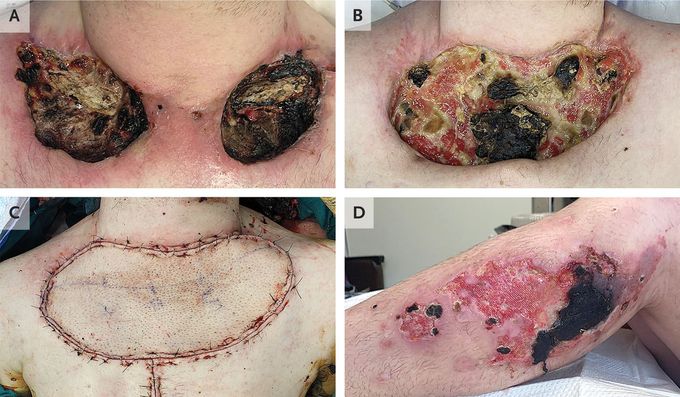


Xylazine-Associated Skin Injury
A 32-year-old man presented to the emergency department with a 1-month history of enlarging chest wounds. He reported a 3-year history of daily use of fentanyl adulterated with xylazine by injection into his neck and arm veins. Physical examination showed necrotic wounds on the upper chest with exposure of the underlying clavicles (Panel A). Computed tomography of the chest showed osteomyelitis of the clavicles and manubrium, in addition to soft-tissue ulceration and inflammation. A tissue culture grew Pseudomonas aeruginosa and enterococcus species. A diagnosis of xylazine-associated skin injury complicated by soft-tissue infection and osteomyelitis was made. Chest-wall débridement (Panel B) and microsurgical flap reconstruction (Panel C) were performed. Intravenous antimicrobial therapy was initiated on admission and continued for 6 weeks postoperatively. Buprenorphine therapy was initiated to treat the patient’s opioid-use disorder. Xylazine (also known as “tranq”) is an α2-adrenergic receptor agonist that has been approved only for veterinary use. It is an increasingly prevalent additive to fentanyl in the United States. Xylazine is associated with skin injury — commonly on the legs (Panel D, different patient) — that can occur regardless of the site of injection. At the 6-month follow-up visit, the patient’s wounds had healed well, and he had been participating in an outpatient addiction program.

